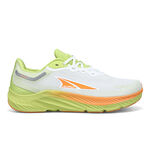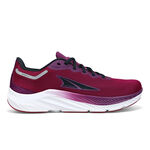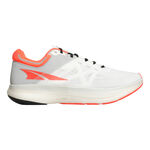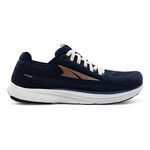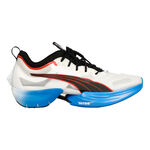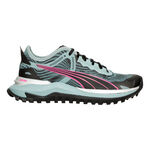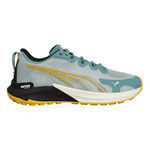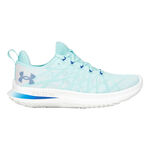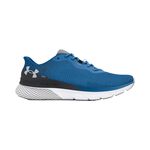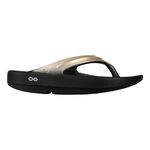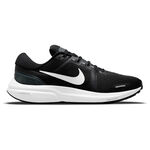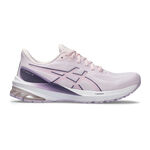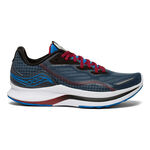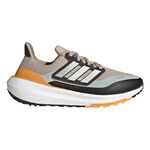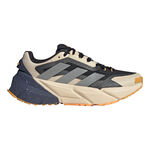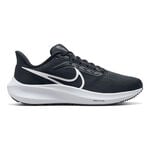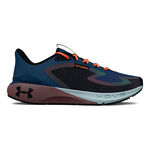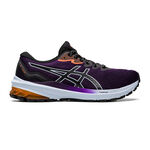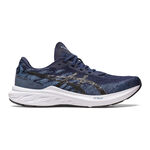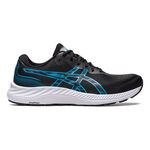Running shoes





Running shoes at Running-Point - where else?
There are not many sports that are as easily accessible as running. Put on sports shoes, sports shorts and a T-shirt and you're ready to go. However, it is advisable not to wear just any shoes if you want to enjoy jogging for as long as possible. This is because the wrong running shoes can have serious long-term consequences for your bones, joints and muscles.
This can even go so far that you not only have to give up running, but are also restricted in your everyday life. That's why you should definitely take some time to choose new running shoes before you buy them, regardless of whether you are a professional runner, ambitious amateur athlete or occasional recreational jogger.
The range of running shoes on offer has become so diverse that it's easy to lose track. Which running shoe is right for me? What do I need to look out for when buying? What requirements does my running shoe need to meet so that I have the most fun possible when running? We answer these and other questions in this article.
Why should you wear running shoes at all?
Some people may wonder why you need special shoes for running at all. Won't my normal everyday sneakers do? The short answer is: No. When you run, your feet, knees and spine are exposed to enormous loads that ordinary sports shoes cannot absorb. Every time we put our foot down, our musculoskeletal system has to absorb around three times our body weight. It is therefore very useful if the footwear is able to alleviate this strain somewhat.
Running shoes have been developed for precisely this purpose, namely to help runners reach their destination with minimal strain on the musculoskeletal system. They also ensure optimized power transmission so that you can use your energy more efficiently. With the right running shoe to suit your individual requirements, you not only minimize the risk of injuries and long-term damage to your knees, spine, shins or feet, you also use your power more efficiently so that you can run longer and more dynamically.
What you should look out for when buying running shoes
Choosing the right running shoe depends on various factors. The most important thing is that you feel comfortable in your running shoes straight away. If it pinches or pinches in one place or another when you try it on, it's the wrong running shoe for you. This problem will only get worse over time and spoil your enjoyment of running.
Furthermore, your running shoe must suit your running style. Every running type is different, the anatomy of runners can vary considerably and the preferred surface for running is another aspect that needs to be taken into account when choosing the right running shoe.
For example, if you primarily run on paved roads and footpaths, your individual requirements for the perfect running shoe will be different from those if you mainly jog through woods and meadows. Body height and weight, fitness level and individual goals as well as age are other factors that play a role in choosing the right running shoe.
What surface do you run on?
Where you prefer to go jogging plays a very important role in choosing the right running shoe. If you mainly run in the city on paved paths, you are probably looking for running shoes with good cushioning and high responsiveness. If, on the other hand, you mostly run off-road, you are looking for robustness, good support and a firm grip.
How much cushioning should your running shoe have?
More cushioning means more comfort when running and a higher energy return. However, this comes at the price of additional weight and a greater distance to the ground. Running shoes with less cushioning allow you to feel the ground more directly when running. If you are not yet sure what you prefer, take your time and test out different running shoes to find out which ones you feel most comfortable in.
Do you have a particular rolling motion?
The individual rolling behavior of the foot, known as pronation in technical jargon, is another factor that influences your choice of shoes. If the shoes do not match your running style, the risk of injury increases enormously. Around half of the population has a neutral rolling motion, the feet roll neither too much inwards nor outwards. No special support is needed on the inside or outside of the foot.
The other half of the population are either underpronators or overpronators. If you are an overpronator, your ankle and foot bend inwards when they come into contact with the ground. In this case, you need a stability shoe. This is a running shoe with structuring and supportive cushioning, especially in the midfoot area. On the other hand, you should avoid running shoes with a reinforced outer side.
If the outer edge of the foot is excessively stressed during the running motion, this is called underpronation. Running shoes for underpronators have strong cushioning, which ensures that shocks are evenly distributed from the heel to the midsole and the outside.
How much room should there be in the front of the running shoe?
Your running shoes should sit comfortably on your feet and not be too tight. When you run, your body weight presses on your feet, they expand and need more space. You should bear this in mind when buying new running shoes and choose a size larger than you normally wear. There should be about a thumb's width of space between your big toe and the seam so that you don't bump into anything at the front. With the right lacing, you can ensure that the heel remains optimally positioned and does not slip out while jogging, even with larger running shoes.
How often should I change my running shoes?
As with any other shoe, the material of running shoes deteriorates over time and they slowly lose their functional properties. After around 700 kilometers, most running shoes have reached the end of their service life. However, the speed at which your running shoes age also depends on how often and intensively you run in them, the surface you mainly run on and your body weight.
After a year at the latest, however, it is advisable to look around for a new pair of running shoes. If you can't remember exactly when you bought your running shoes - it is advisable to make a note of the date the next time you buy them - you can easily find out whether they still offer enough stability by bending them. If the running shoes can be bent or twisted completely, they have definitely had their day and a new pair is due.
Large selection of running shoes at Running-Point
At Running-Point you will find a large selection of running shoes from all renowned manufacturers such as ASICS, adidas, Brooks and Nike. And in many great colors and exciting designs! You should attach less importance to the look of your running shoes than their functionality, but if you can kill two birds with one stone, why not?
To make it easier for you to find your way around our extensive range of high-quality running shoes, we have divided them into the following five categories:
- All-round - versatile, well-cushioned running shoes for everyday training on a variety of surfaces.
- Trail - running shoes for off-road terrain with a firm grip, robust outsole and mostly water-repellent properties.
- Competition - Competition shoes are lighter than normal running shoes and have a smaller difference in height between the heel and forefoot.
- Recovery shoes - Support regeneration after running and offer quick recovery for aching feet.
- Spikes - For better grip and more explosiveness on the tartan track.
Whether you're a professional, an ambitious hobby runner or an occasional recreational jogger, you're sure to find the perfect pair for your personal running style in our online store for passionate runners.
Incidentally, we cover the delivery costs for purchases over € 150, and if, contrary to expectations, you are not satisfied with your order, you can fully rely on our 30 days money-back promise. This means you don't take any risks with Running-Point. So what are you waiting for? Order your new pair of running shoes today and look forward to even more running fun!
-
Advantage Running Point
Advantage Running Point
Running Point provides a wide range of latest running products.
Professional coaches and especially skilled, competent staff will advise you with pleasure.
Moreover, we offer a modern and high qualitive shopping environment with many functions to create your purchase as pleasant as possible.
Use the online-account of Running Point for a special benefit.
All advantages at a glance. -
Safe delivery
Safe delivery
If your chosen products are in stock your order will be ready for dispatch within 24 hours on work days, following confirmation of your payment being cleared.
We will deliver to the address specified in your order.
Overview of our delivery costs. -
30 days money-back guarantee
30 days money-back guarantee
You don't like the product you ordered or the fit and size are incorrect?
No problem.
You have a legal right to cancel your contract before delivery and up to 14 days after delivery.
Furthermore we promise you our money-back guarantee. Running Point has extended this to a total of 30 days after delivery.
If you want to return goods please e-mail us or write us. We will advise you what to do and refund you, including the original postage charges, within 30 days. You do not have to give any reason for cancellation. However, a brief explanation will help us to improve our service in the future.
If you cancel, you must return the goods at your own expense. In this case, you are also responsible for the risk of loss or damage, therefore we recommed a postal insurance to cover the value. -
Secure payment methods
Secure payment methods
Try on first and keep the articles you like.
Our Secure payment methods:
- Credit card
- PayPal
- Klarna
-
Secure shopping
Secure shopping
Your trust is important to us!
We assure that your personal data and any information about you will not be used for other purposes than the transaction with us. This is an important part of our philosophy.
In addition, all data is securely transmitted using SSL encoding.
Running Point
Hans-Böckler-Str. 29-35
33442 Herzebrock-Clarholz
Germany
Contact
Running Point.com has high quality standards. Parts like data privacy, costs and payments, delivery conditions, returns and customer service are checked regularly.
- 30 days money-back guarantee
- Fast delivery
- SSL encryption
- Data privacy
